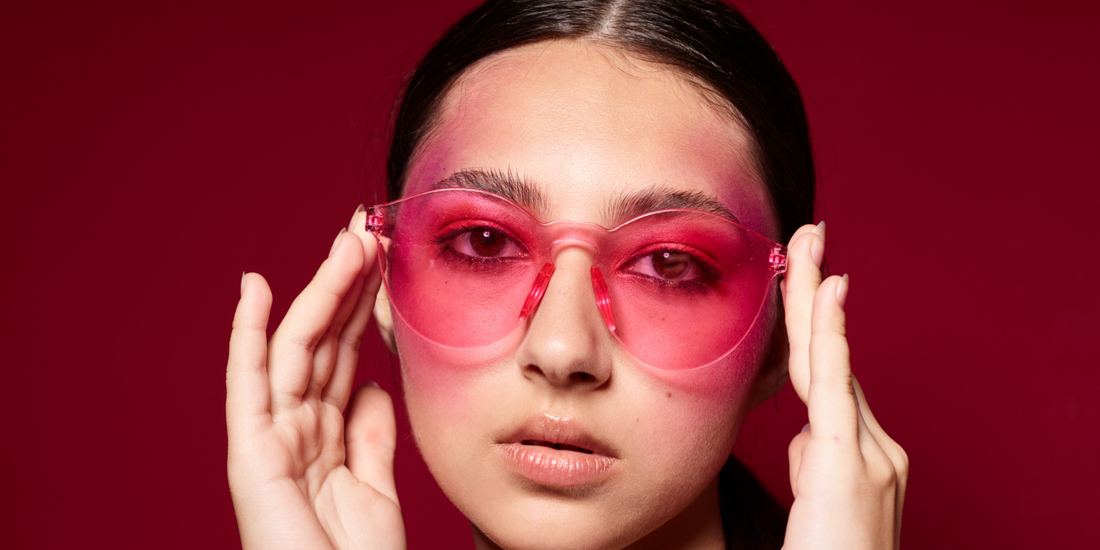
Frame Materials 101: Metal, Plastic, Acetate & More
Share
Frame Materials 101: Metal, Plastic, Acetate & More
Choosing a new pair of glasses is about more than just finding a frame that looks good—it’s also about finding a material that suits your lifestyle, comfort, and durability needs. At Rochester Optical, we believe that understanding your options empowers you to make the best choice for your vision and style.
In this guide, we’ll walk you through the most common eyewear frame materials, breaking down their pros, cons, and ideal use cases.
1. Metal Frames: Sleek, Strong & Timeless
Types: Stainless Steel, Titanium, Memory Metal, Monel
Why Choose Metal Frames?
Metal frames are known for their strength, minimalist design, and hypoallergenic options (like titanium). They’re often thinner and lighter than plastic frames, making them a go-to for those who prioritize subtlety and all-day comfort.
Pros:
-
Lightweight and strong
-
Corrosion-resistant (especially titanium and stainless steel)
-
Adjustable nose pads for a customizable fit
Cons:
-
Can bend or break under pressure
-
Some alloys may cause allergic reactions (though this is less common today)
Best for: Professionals, minimalists, and anyone needing durability with a refined look.

2. Plastic Frames: Bold, Affordable & Versatile
Types: Zyl (cellulose acetate), Nylon, Polycarbonate
Plastic frames offer a world of color and shape possibilities. They tend to be more budget-friendly and can easily make a fashion statement.
Pros:
-
Wide variety of colors and styles
-
Typically less expensive
-
Good for high-prescription lenses due to thicker build
Cons:
-
Less adjustable once manufactured
-
Can become brittle over time, especially in cold climates
Best for: Trendsetters, color-lovers, and budget-conscious buyers.
`

3. Acetate Frames: Eco-Friendly & Fashion-Forward
Acetate, a plant-based plastic, is often mistaken for ordinary plastic—but it’s actually a more premium, sustainable material.
Why Choose Acetate?
Unlike injected plastic, acetate is crafted in layers, allowing for more vibrant colors and better flexibility. It’s also hypoallergenic, making it a smart choice for sensitive skin.
Pros:
-
Eco-friendlier than traditional plastics
-
Rich, multi-dimensional colors
-
Lightweight and durable
Cons:
-
Not as adjustable as metal
-
Slightly higher cost due to quality
Best for: Eco-conscious shoppers and those looking for high-end style and comfort.

4. Combination Frames: The Best of Both Worlds
What Are They?
Combination frames blend metal and plastic materials, often featuring a metal bridge or temples with acetate rims—or vice versa. They offer a unique aesthetic and balance strength with bold design.
Pros:
-
Unique, fashion-forward look
-
Mix of comfort, strength, and flexibility
-
Customizable fit with adjustable components
Cons:
-
May cost more than single-material frames
-
Can be heavier depending on the design
Best for: Fashion enthusiasts and those seeking both function and flair.
5. Other Materials: Wood, Horn, Carbon Fiber & More
For those who want something truly different, specialty materials like wood, buffalo horn, or carbon fiber offer a luxury feel and artisanal touch.
Keep in Mind:
-
These frames are often handcrafted and limited edition
-
They may require special care or maintenance
-
Some (like horn) may not be vegan-friendly
Best for: Collectors, statement-makers, and lovers of bespoke eyewear.
Final Thoughts: Find the Right Fit at Rochester Optical
When it comes to choosing frame materials, there’s no one-size-fits-all answer. Whether you need rugged performance for an active lifestyle or a stylish edge for your day-to-day, understanding the benefits of each material helps you make a confident, informed decision.
At Rochester Optical, our expert opticians are always here to help you find the perfect match—style, function, and comfort included.
Visit us in-store or browse online to find your next favorite pair.
